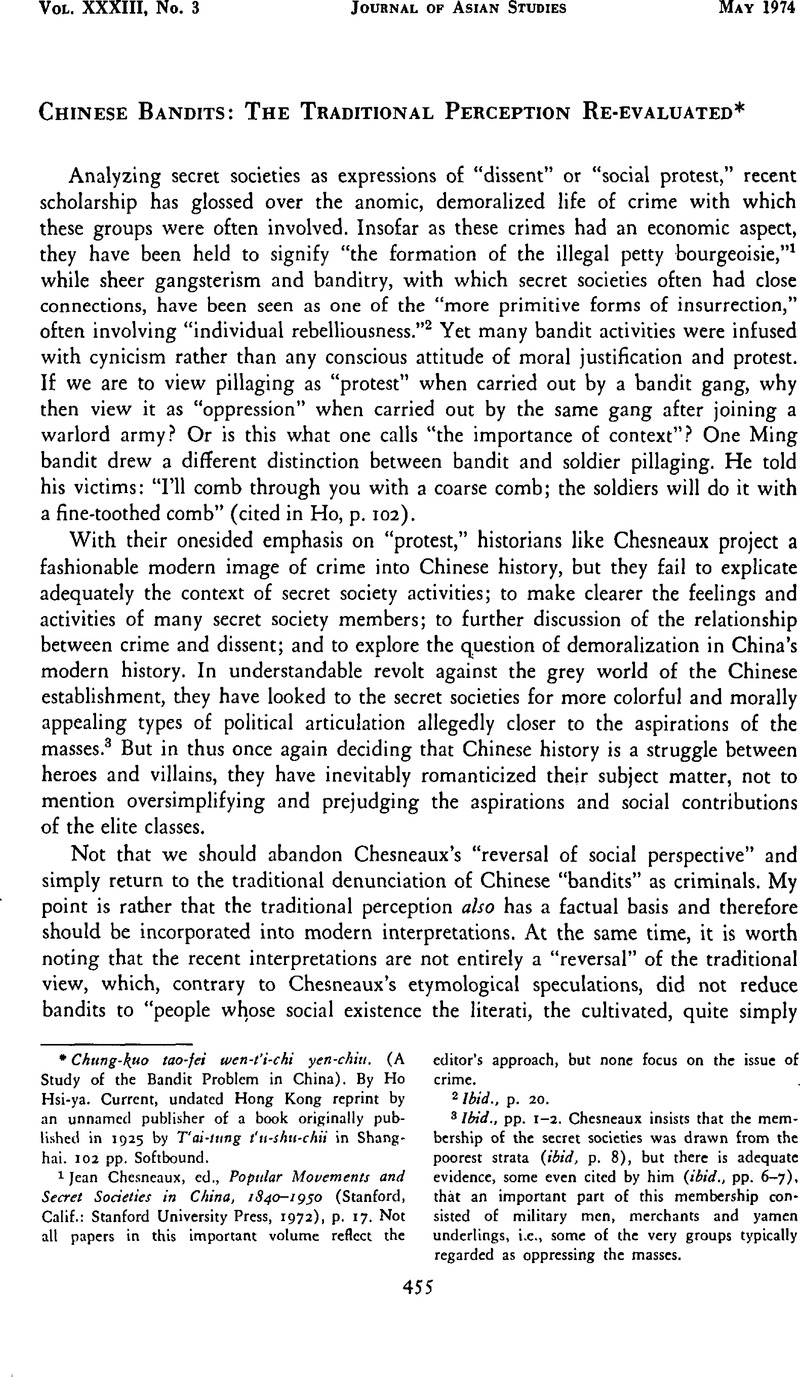Published online by Cambridge University Press: 23 March 2011

1 Chesneaux, Jean, ed., Popular Movements and Secret Societies in China, 1840–1950 (Stanford, Calif.: Stanford University Press, 1972), p.Google Scholar 17. Not all papers in this important volume reflect the editor's approach, but none focus on the issue of crime.
2 Ibid, p. 20.
3 Ibid, pp. 1–2. Chesneaux insists that the mem bership of the secret societies was drawn from the poorest strata {ibid p. 8), but there is adequate evidence, some even cited by him {ibid, pp. 6–7), that an important part of this membership consisted of military men, merchants and yamen underlings, i.e., some of the very groups typically regarded as oppressing the masses.
4 ibid, p. 2.
5 See p. 483 in Polachek, James, “Secret Societies in China and the Republican Revolution,” The Journal of Asian Studies, XXXII:3 (May 1973), pp. 483–487.CrossRefGoogle Scholar